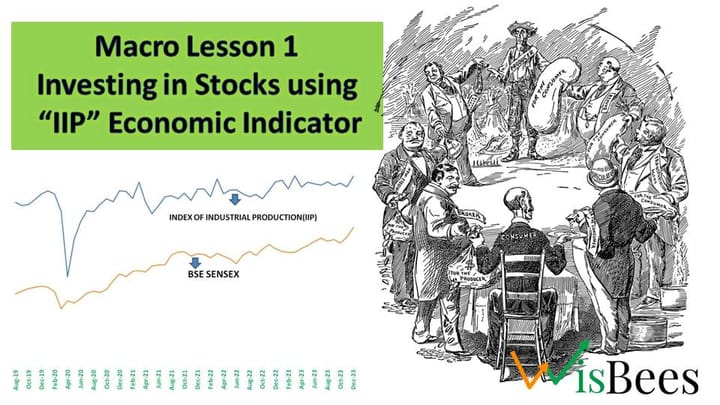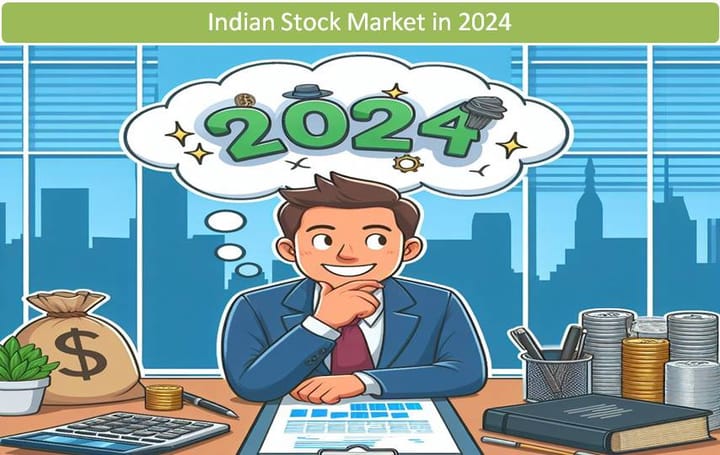HDFC Bank: The Powerhouse of the Banking Industry. An EIC-Investment Analysis || Epic merger of titans, aiming to capture a larger market share.

Story
Do you know why the 2008 global financial crisis happened? Why did Lehman Brothers become its focal point?
Financial services are the lifeblood of any economy. The crisis was primarily caused by irresponsible banking, poor governance, and inadequate risk management. Lehman Brothers had taken excessive leverage, making risky investments in the housing market. When the housing market collapsed, the bank's assets plummeted in value, leaving them unable to cover their debts.
In the wake of this banking industry incident, Basel III norms were introduced by the "Basel Committee," which raised capital requirements for banks, bolstering the global banking system. Thanks to the various parameters set by the Basel Committee, the likelihood of a banking crisis is now considerably reduced.
However, are we entirely immune to a similar incident occurring again?
Not entirely! While the chances of a crisis are lower, they are not completely avoidable, as evidenced by the crises faced by Silicon Valley Bank and Credit Suisse. We will discuss this concern further in detail in the Economic Analysis section. When seeking a bank less likely to fail, we may opt for one considered "Too big to fail."
One such bank is HDFC Bank. It holds the distinction of being India's largest bank by Market Capitalization and the second-largest by Asset size, after the State Bank of India. Banks like HDFC Bank are often backed by government policies and regulations to prevent any economic crisis arising from their operations. Stay tuned!
Main story- HDFC Bank and It’s Merger
Following the merger, my curiosity was piqued as I delved into what analysts were saying about HDFC Bank's valuation on Bloomberg terminal. To my surprise, over 95% of analysts have given a buy rating for HDFC Bank. This led me to conduct further research, and today, I'll be discussing India's largest bank by Market Capitalisation - HDFC Bank.and its strategic merger plans that have cemented its position as a banking powerhouse.
“FPI's new Obsession: Banking and Financial Services”
At Wisbees, we delved into the data from NSDL FPI Monitor, examining the investment trends of FPIs over the past four months. The findings were eye-opening.
FPIs poured a substantial investment of nearly 51k Crores into the Banking and Financial Service sector, closely followed by investments in Autos, Capital goods, and FMCG.
But wait, what prompts this sudden shift towards banking in India, given the turmoil in the global banking scene, as seen with Silicon Valley Bank and Credit Suisse's disastrous failures?
To understand the rationale behind this trend, let's take a moment and conduct a comprehensive 360-degree EICT Investment analysis on HDFC Bank to determine if it's truly investment-worthy.
HDFC Bank appears appealing to investors due to:
- Strategic branch expansion
- Enhanced customer engagement
- Targeted cross-selling efforts
The confidence in investing in HDFC Bank is strengthened by:
- FPI's robust cash flow in the banking and financial services sector
A significant cross-sell opportunity arises as:
- Approximately 70% of HDFC customers currently do not utilize the bank's services
- Around 98% of HDFC Bank customers have not taken home loans from the bank
The Net Interest Margin (NIM) may experience a slight decline after the merger, but it is expected to improve soon with:
- The reduction of HDFC's borrowing cost
The merger is not expected to have a major impact on Return on Assets (ROA).
The bank's risk-absorbing capacity is continually improving with:
- An increase in Tier 1 and Tier 2 Capital.
Economic Analysis
So now answering to the question- Can We Avoid SVB Crisis and Credit Suisse Incidents?
we must first understand the root causes of these banking catastrophes.
Why SVB Failed?
The downfall of Silicon Valley Bank (SVB) was a perfect storm of poor governance, inadequate risk management, and unfortunate circumstances. Traditionally, banks thrive by accepting deposits and providing loans to fuel economic growth. However, SVB deviated from this path, heavily investing in long-term bonds for higher profitability. Unfortunately, these bonds were highly susceptible to interest rate fluctuations. As interest rates surged, the bond prices plummeted, resulting in a staggering loss of 1.8 Billion USD.
Why Credit Suisse Failed?
Credit Suisse, on the other hand, faced significant credit risk and reputational damage. The bank heavily invested in two funds, Archegos and Greensill capitals, both of which collapsed in 2022 due to margin calls on their stock investments. Additionally, the company faced challenges with various scandals, leading to top executives stepping down.
"Deposits serve as the lifeblood/raw material of a bank. A bank faces the risk of crashing when people withdraw their deposits in panic."
How did Indian banks, such as HDFC Bank, respond to this news?
Astonishingly, Indian banks behaved very differently during the global crisis. While deposits were being withdrawn from banks worldwide, especially in Europe, HDFC Bank witnessed a significant increase in deposits. This surge amounted to an impressive 20.84% rise from the previous year growth 16.82%. Additionally, both current deposits and savings deposits grew by 14.3% and 9.9%, respectively. These figures demonstrate the remarkable resilience of our economy amidst the global downturn, instilling optimism in Indian banks.
Note: Although all banks experienced positive deposit growth, HDFC Bank in India stood out among other large banks by showcasing the highest growth rate in deposits. This speaks volumes about the trust and customer-oriented products offered by HDFC Bank. Below is a comparison.

Now, let's discuss the other economic factors that are impacting Indian banks.
Other Tailwinds:
Several points support this notion:
- Resilience to Economic Downturn: India's positive GDP growth is significantly influenced by consumer spending, which flows through banks. As one of the fastest-growing economies, India attracts substantial attention from investors. In FY 22-23, our GDP growth soared at a remarkable rate of 7.2%, surpassing major economies, driven by robust domestic consumption demand.
- Favorable Demographics and Increased Disposable Income: With 65% of India's population being young and in their working age, the banking industry receives a favorable boost. The youth's inclination towards adopting digital banking solutions and technology-driven services further augments this trend. The average median age of India's population is 28.4 years.
- Election 2024 and Capex Boost: The government of India is infusing significant capital into the system to expand infrastructure. This liquidity positively impacts banks, fostering growth opportunities. The budget for 2023-24 declared a capital expenditure of 10 lakh crore, contributing to enhanced rural consumption, which, in turn, benefits the banking sector.
With these favorable factors at play, Indian banks have witnessed a remarkable increase in total assets, rising by 10% from 2017 to 2020, reaching a substantial value of $2,559.1 billion. Comparatively, South Korea and Chinese banking industries experienced growth rates of 8.5% and 8.9%, respectively.
Headwinds(Negative Factors):-
Indian banks have shown impressive resilience amidst the regional banking turmoil in the US and Europe. Nevertheless, the global turmoil's ripple effects may still impact domestic markets, fueled by factors such as high inflation and geopolitical tensions.
Now, before we delve into the Industry Analysis, let's first take a closer look at all the significant information concerning the merger.
The driving force behind the merger is to create a banking behemoth. Astonishingly, almost 70% of HDFC customers currently do not utilize the bank's services, but with the merger, they can now be offered bank accounts, tapping into a vast untapped market. Similarly, around 98% of HDFC Bank customers have not taken home loans, presenting a tremendous opportunity to sell home loans and enhance the customer experience. Through cross-selling, HDFC will expand its product offerings, including saving accounts, personal loans, insurance cover, and housing loans, ultimately providing a more comprehensive and enriching experience for its customers.
Industry Analysis
The Indian banking system has achieved unprecedented strength, evident from the remarkable rise in profitability with the ROA (Return on Assets) surging to 1.1% in 2023 from a mere -0.2% in 2018. HDFC Bank has played a pivotal role in this transformation.
With the merger taking place on July 1st, HDFC Bank ascended to the position of the world's 7th largest lender by Market Capitalisation, surpassing even esteemed institutions like Morgan Stanley and Bank of China.
Despite the remarkable progress, there remains an under-penetration of banking services in India. Currently holding a market share of 10.1%, HDFC Bank aims to further expand its reach through cross-selling after the merger. While the bank dominates in urban areas and cities, it seeks to gain a stronger foothold in the semi-urban and rural markets. The bank's management has expressed intentions to achieve this goal through a strategic combination of branch expansion and other initiatives.
HDFC - A Banking Giant: Second Largest by Assets, Numero Uno by Market Capitalization!
Despite being the second-largest in terms of asset size, HDFC Bank outshines with a higher market capitalization. This remarkable feat can be attributed to its impressive earning per share growth.
Market Leadership:-
As a market leader, HDFC BANK has dominated the Auto Loan segment, credit cards, and personal loans since 2011, solidifying its position as a front-runner in the banking industry.
What is the industry's growth rate?
Based on IBEF research, the industry is currently growing at an impressive rate of 10.92%. Notably, in the above figure, we observed HDFC Bank outperforming its peers and the industry, with deposits growing at a remarkable rate of 20.84%.
Analysing the Company
The valuation of HDFC Bank, which was once perceived as significantly higher than its peer companies, has now taken a shift towards being available at a highly discounted price. Let's conduct a thorough analysis, carefully examining the facts. As is our practice, we prioritize understanding the business before delving into financial analysis. This entails exploring the company through a series of pertinent questions.
What constitutes the Core Business and Revenue mix of HDFC Bank?
As India's largest bank, HDFC Bank earns its revenues primarily from three segments: Treasury, Retail Banking, and Wholesale Banking. Out of these three, the highest revenue comes from Retail Banking. Yes, you heard that right! Almost 49% of its revenue is derived from retail loans, and with the strategic merger decision, the bank aims to further expand its presence in this sector.
(Note: Treasury Income refers to the income generated by the bank through various investing, trading, and hedging activities using surplus funds available after providing loans. Wholesale loans are also commonly known as corporate loans.)
With Retail Banking loans being a major contributor, now the 70% of HDFC Limited's customers who haven't utilized banking services can potentially contribute more to this segment through cross-selling. Additionally, Priority Sector Lending (lending to Agri, MSME, Education) has emerged as one of the significant growth drivers.
Moat of HDFC Bank
The company falls under the category of "Too Big to Fail," signifying that banks of this nature serve as a strong backbone for the entire Indian economy and are consistently supported by government schemes. With a significant market share and a robust network, the bank can always maintain good deposit accounts, including Current and Savings accounts.
Expansion Target
With a strategic Capex target of establishing 1500-2000 branches in the next 4-5 years, the company aims to expand its presence in the Rural and Semi-Urban markets. This proactive approach is expected to draw in a higher influx of deposits for the bank.
Analysing Financials
Revenue Growth:
The Operating Revenue increased by 20%, while most of its competitors are lagging behind HDFC Bank in their growth rate.
Net Interest Margin (NIM):
NIM is almost the same as the operating profit margin, representing the difference between the interest income a bank earns from its loans and investments and the interest it pays on deposits and borrowings.
A higher NIM indicates that the bank is earning more from its core lending and investment activities. Despite experiencing a high growth of 20.84% in Deposits, HDFC Bank has maintained a NIM of 4.1%, showcasing its effective utilization of deposits to generate interest income.
HDFC Bank's NET INTEREST MARGIN is higher than most of its peers.
The Merger Impact on NIM:
With the merger, the Net Interest Margin is expected to come down to 3.8% this year due to HDFC Ltd's low margins caused by high-cost borrowings. However, analysts anticipate that the high-cost borrowings will be replaced by HDFC Bank's cheaper deposits, resulting in increased profitability and a better "Net Interest Margin."
With cross-selling efforts, deposits are projected to grow at a faster rate of 1.5x to 2x, according to the Bank's commentary. The bank's historical track record indicates its proficiency in deploying these funds effectively to generate revenue.
Strong Capital Adequacy Ratio, Return On Equity & Return on Assets:
The bank is maintaining a healthy and strong capital adequacy ratio of 19.3%, surpassing the required rate set by RBI at 11-12%.
The Return on Equity is one of the highest in the industry at 17.4%. Although the ROE may dip initially after the merger, it is expected to return to pre-merger levels after a few quarters.
The Return on Assets currently stands at 2.07% and is expected to remain unaffected, even with the merger.
Risks
HDFC Bank has maintained one of the lowest levels of Non-Performing Assets in the industry.
Decreasing Gross NPA (GNPA) - Improved Asset Quality:
The GNPA of the bank has reduced from 1.17% to 1.12%, indicating a positive improvement in asset quality.
Declining Net NPA - Effective Management of Bad Loans:
The Net NPA has also decreased from 0.32% to 0.27%, showcasing the bank's ability to write off (absorb) some of its bad loans efficiently.
Increasing Capital Adequacy Ratio (CAR)-
The Capital Adequacy Ratio, a key measure of a bank's financial strength, demonstrates HDFC Bank's ability to absorb potential losses. The CAR has consistently increased, reflecting the bank's heightened risk appetite and robust financial position, making it stronger than ever.
Valuation
The P/E ratio(Price to Earning) should not be considered in the case of a bank as earnings are volatile. Instead, the P/B ratio (Price to Book Value) is considered more appropriate for evaluating banks. In this regard, the bank appears to be more affordable based on its valuations, with the Price to Book Value having declined to 3.3%, the lowest it has been compared to previous levels.
Technical Tadka:-
The chart is quite intriguing as we observe HDFC Bank's performance on the daily chart. The stock is exhibiting an Ascending Triangle pattern, indicating an upward trend. Additionally, it is trading above its 200-day moving average.

Once the upper resistance area is breached, the stock is poised to reach new highs.
Conclusion:-
"Leadership Continues to Shine"
After a comprehensive analysis of HDFC Bank, taking mergers into consideration, the bank emerges as a robust and low-risk contender with improved asset quality and reduced NPAs. The company has consistently displayed steady growth in its numbers. Although the margin numbers may be affected in the initial quarters post-merger, the long-term outlook appears promising, particularly with HDFC Limited's reduced cost of borrowing, strengthening the bank's position. HDFC Bank's leadership across different segments remains strong and is expected to continue further. The confidence in investing in HDFC Bank is bolstered by FPI's strong cash flow in the banking and financial services sector.
Several key points make it appealing to investors, including strategic branch expansion, enhanced customer engagement, and targeted cross-selling efforts.
From a technical stand point, the bank appears poised to break out of an Ascending Triangle, suggesting potential upward movement in the stock price.
Disclaimer:- We are not a SEBI registered Investment Advisor. This is not a recommendation but only a case of sample analysis that might help you to do fundamental research on various companies.
Below is what we see of the Stock Price.
View:- Six Month to One year
CMP:- 1643
Target:- 2100 and above
| Broker | Type | Offerings | Invest |
|---|---|---|---|
 |
Discount Broker | Mutual Funds, Stocks, IPOs, Bonds | Know more |
 |
Discount Broker | Mutual Funds, Stocks, IPOs, Bonds | Know more |
 |
Discount Broker | Mutual Funds, Stocks, IPOs, Bonds | Know more |
 |
Service Broker | Mutual Funds, Stocks, IPOs, Bonds | Know more |



